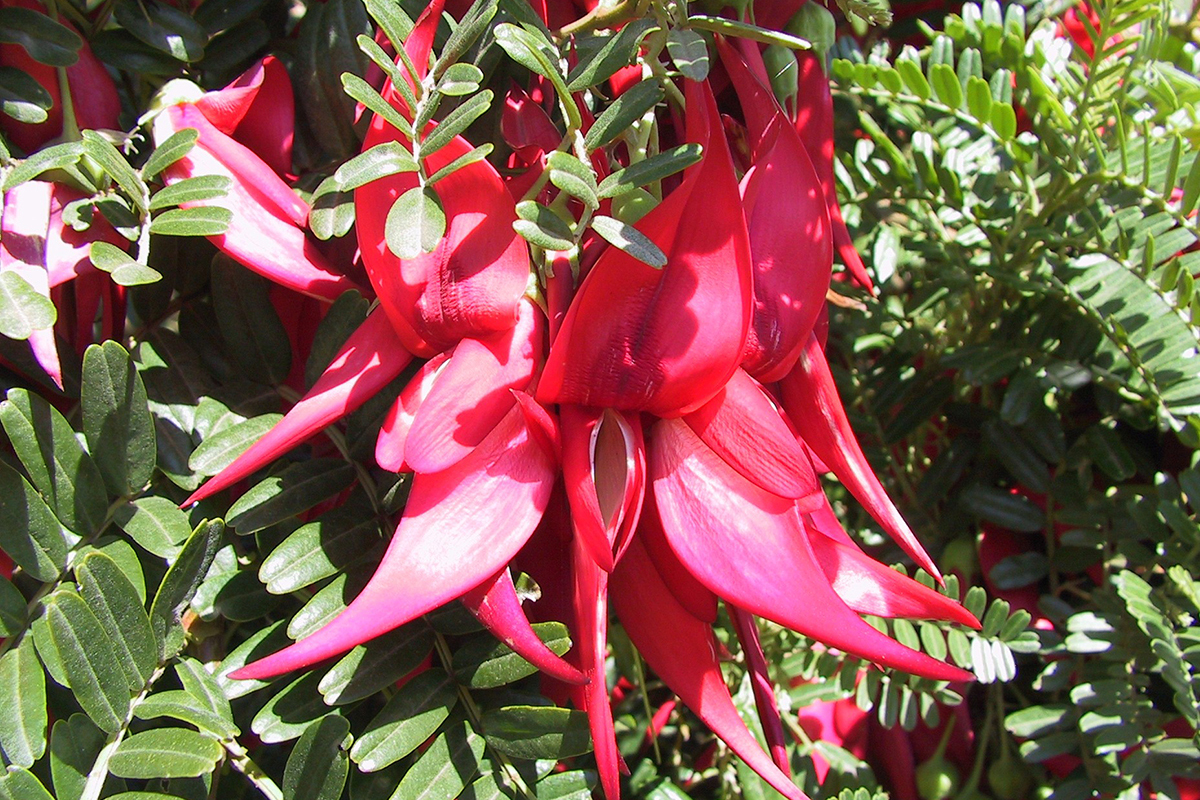A bid to save the genetic diversity of wild kākābeak has won a $5,000 grant from Biodiversity Hawke’s Bay.
With its bright-red flowers shaped like a parrot’s beak, kākābeak (also called ngutukākā), is one of New Zealand’s most critically endangered species, on the same level in conservation terms as Kakapo our rare flightless parrot – i.e. at immediate risk of extinction in the wild.
There are only 109 known wild kākābeak plants clinging to life on remote cliff faces and bluffs on the coast from Lake Tutira up to East Cape.
In a bid to stave off their extinction and ensure the plant’s wild whakapapa continues, three enclosures covering one hectare have been created in a remote valley at Maungataniwha, south of Lake Waikaremoana. There, some 150 seedlings taken from cuttings of wild plants and seeds are currently being nurtured and cared for by James Powrie, a former commercial forester and now a consultant in forestry restoration. Deer, in particular, and goats cannot get into the enclosures and each plant is regularly slug-baited, fertilised and protected from too much or too little sun.
For James, the Biodiversity Hawke’s Bay funding will help to build a community of support for the critically endangered plant – a plant that he says “is well worth saving and was once a key part of Hawke’s Bay’s ecosystem”.
He uses the example of Lake Tutira where early conservationist Herbert Guthrie once wrote of the surrounding hills “covered in the red flowers of the kākābeak”.
A member of the kowhai family, Kākābeak are good for our environment. They are legumes and are high in nitrogen. They are also a source of food for native birds and their seed pods were once a source of food for early Māori.
“Ironically it was humans who brought pests to New Zealand that wiped out Kākābeak,” says James. “Now it is only because of human intervention that we might save the species.”
James works closely with Hawke’s Bay ecologist Marie Taylor who has helped with seed and plant propagation and he stays in touch with the National Ngutukākā Recovery Group which meets every year or two and is led by DOC. Readers can get involved by contacting James on: redaxenz@gmail.com
Other community groups and projects to receive funding in the second year of the Biodiversity Hawke’s Bay contestable fund include the Maraetōtara Tree Trust, to support native riparian planting to improve water quality and to provide a corridor for birds, and Te Mata Park Trust to help control pests to enhance the re-establishment of the ngahere/forest and native species in the park.
The Pekapeka-tou-roa/long-tailed bat will also benefit from the grant this year, as well as Te Huka Waiohinganga (Esk) River Care Group in the creation of their community nursery, the Urban Kākābeak Project, rabbit control at Puahanui Bush in Central Hawke’s Bay, and native plant revegetation at Esk Hills Reserve.
To learn more about biodiversity, become a Biodiversity Hawke’s Bay member, to donate or volunteer, visit www.biodiversityhb.org


Having just bought 2 kakabeak seedlings for my garden at Puketapu I was delighted to read about this exciting project. Thanks to Erol Fergusson of Hastings for propagating my plants in his backyard
Our plant at Whangaehu (CHB) has grown from a small plant & survived being ripped out of the ground in a 180km/hr wind, regrown & thriving.
We recently planted a kakabeak in our Havelock North garden and it is thriving. A Wellington building contractor passed it on to our son who had been an architect for their project so it is great that this is kicking off in Hawkes Bay and can be continued by interested others.
I have grown the red kakabeak from seeds taken from the plant by the Men’s Shed in the show grounds Hastings.
I have 2 red Kakabeak and 2 cream Kakabeak and all are thriving and I have also posted photos of these to my Whanau
I had purchased these from a wonderful lady/friend who’s name I won’t mention as I don’t have her permission to do so, but know this, she is an expert in her field and is extremely knowledgeable regarding our Native fauna